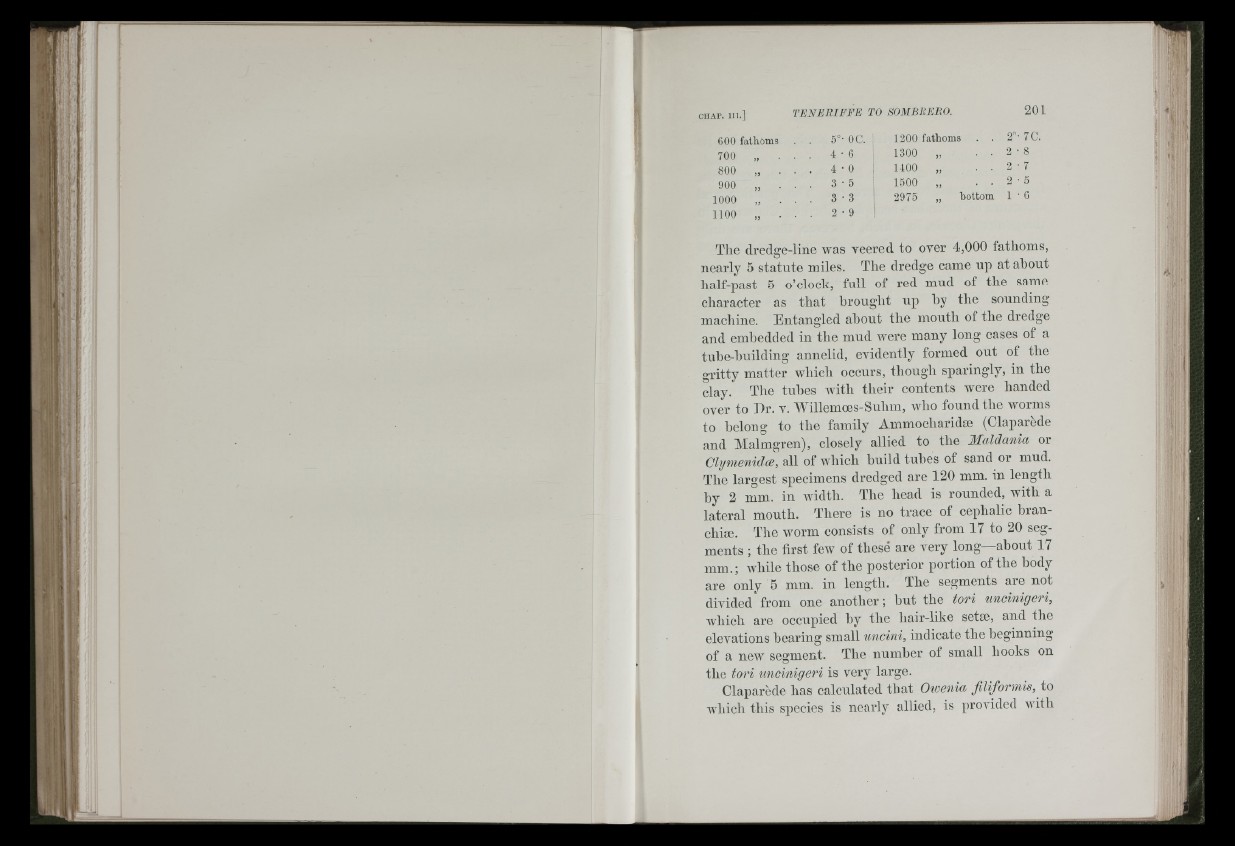
'■II ■
ir■
f
[\ !
'il
:i
If’^v
i'ili .! I-iff '[III
^ .ii*fi
11
T E N E R I F F E T O S O M B R E R O . 201
5°- OC. : 1200 fathoms . . 2"- 7C.
4 - 6 : 1300 * * 2 • 8
4 - 0 ! 1400 ii . ' ' 2 • 7
3 ■ 5 1500 ■ * 2 • 5
ii 3 • 3
2975 „ bottom 1 • 6
2 - 9
CHAP. i n . ]
600 fathoms
700 „
800 „ .
900 „ .
1000 „ .
1100 „ .
The dredge-line was veered to over 4,000 fathoms,
nearly 5 statute miles. The dredge eame up at ahout
half-past 5 o’clock, full of red mud of the same
character as that brought up hy tlie sounding
machine. Entangled ahout the mouth of the dredge
and embedded iu the mud ivere many long cases of a
tuhe-huilding annelid, evidently formed out of the
gritty matter which occurs, though sparingly, in the
clay. The tuhes wdtli their contents were handed
over to Dr. v. Willemoes-Suhm, who found the worms
to belong to the family Ammocharidæ (Claparède
and Malmgren), closely allied to the Maldania or
Clymenidce, A \o i which huild tuhes of sand or mud.
The largest specimens dredged are 120 mm. iu length
by 2 mm. in width. The head is rounded, with a
lateral mouth. There is no trace of cephalic hrau-
chiæ. The worm consists of only from 17 to 20 segments
; the first few of these are very long—about 17
mm.; while those of the posterior portion of the body
are only 5 mm. in length. The segments are not
divided from one another; hut the tori uncinigeri,
which are occupied hy the hair-like setæ, and the
elevations bearing small undni, indicate the beginning
of a new segment. The number of small hooks on
the tori uncinigeri is very large.
Claparède has calculated that Owenia Jiliformis, to
Avhich this species is nearly allied, is provided with
ff